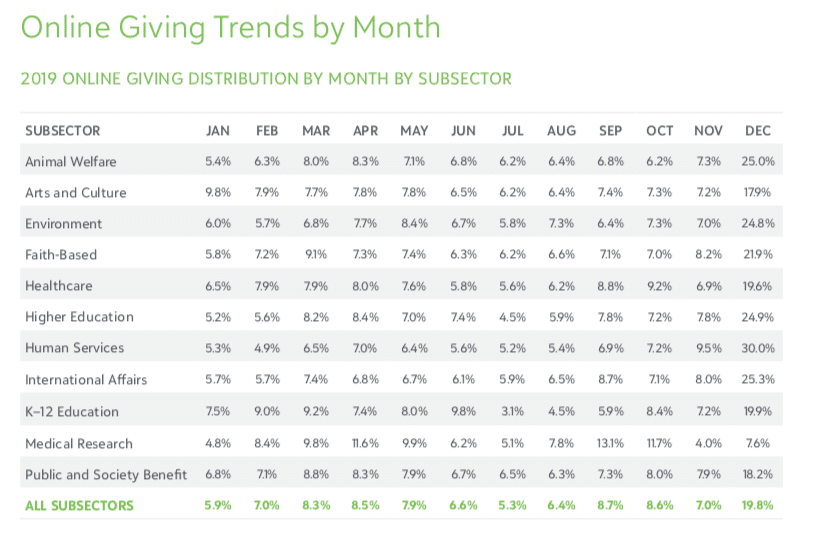Donor First always beats Digital First
Buzzwords can be difficult creatures. As soon as they start appearing in the fundraising lexicon, they slowly build their power until they have a life of their own.
One that I'm hearing pretty regularly at the moment is Digital First.
It turns up in conversations as fundraisers explain their new fundraising strategy in terms of digital products, digital recruitment and digital (donor) development.
Since first hearing it used by newspapers who were struggling with their business models in 2010/11, definitions have changed, but it appears that for many, the focus seems to be replacing traditional fundraising techniques with digital ones.
As fundraisers, we don't have the same problem – or solutions – as the big news companies. Rather than just delivering the right information at the right time, we also need to show appreciation, drive commitment, demonstrate impact and build connection.
And that means that any shift shouldn't be to digital – but to donors.
If a charity is not currently doing a good job of engaging and rewarding supporters, moving the focus to digital fundraising isn't really going to change anything. Particularly if your current response to an online gift is to pump out the standard email acknowledgement that everyone gets – no matter how often they give.
And as we saw from the recent publication by Blackbaud of their 2019 Charitable Giving Report, online giving continues to be dwarfed by traditional channels. In 2019 just 8.7% of all giving was online. And it's interesting to note exactly when income comes in...

Look how giving jumps in December, particularly for sectors such as Human Services, International Affairs and Animal Welfare. That's because people are increasingly responding online to those old fashioned mailing packs and fundraising ads.
Or as Roger Swannell suggested when I shared this chart online:
It's almost like we live in a multi-channel world/world where channels only exist within organisations.
— Roger Swannell (@rogerswannell) February 18, 2020
And as Steve MacLaughlin, Vice President of Data and Analytics at Blackbaud, pointed out in a comment to Simone Joyaux:
The fundraiser’s peril is confusing the channel of engagement with the channel of transaction. It’s always an “and” not an “or” for the donor. https://t.co/xUZmTdM7cw
— Steve MacLaughlin (@SMacLaughlin) February 22, 2020
Which was supported by Denisa Casement and Lisa Sargent.
In my case it was...
— Lisa Sargent (@lisasargent2) February 22, 2020
Digital agency labels them digital donors.
Digital agency heralds the demise of DM for the org.
Lisa asks org to track source of as many digital donors as possible.
$250k in online revs tracked to DM. And those were the obvious ones.
Quite the 'decline.'
That's why any approach to digital has to be part of an integrated fundraising strategy. To emphasise Steve's point, digital is "always an 'and' not an 'or' for the donor."
Just as with traditional techniques, digital fundraising should focus on the supporter experience and place emphasis on meeting the needs of donors.
So much technology is about automation. And donors are constantly telling us that what they most value about the work of charities is the human element: The nurses helping people with terminal illnesses, the lifeboat crews, the child protection teams, the medical researchers and the thousands of other examples of people doing good.
The fact is, humans aren't driven by process. We are messy, funny, amazing and emotional. And any supporter experience strategy has to remember that the channel isn't as important as the experience.
So before investing heavily in any one channel, get the basics right first. That doesn't need a strategy. It needs someone to look at where the human contact points are in your charity's giving and thanking process and ensure you are delivering the THREE Rs.
- Are you demonstrating REAL humanity?
- Are your systems ROBUST?
- Are you RELEVANT to the donor's reason for giving?
And remember, as Karen Hopper said on Twitter:
I always say the channel of inspiration is not always the channel of action!
— Karen Hopper (@nochillfilter) February 22, 2020
Tags In
Related Posts
3 Comments
Comments are closed.
The Essentials

Crack the Code to Regular Giving: Insights, Strategies, and a Special Giveaway!

‘Tis Halloween. Keep to the light and beware the Four Fundraisers of the Apocalypse!

Why do people give? The Donor Participation Project with Louis Diez.

A guide to fundraising on the back of a postcard

What does the latest research tell us about the state of fundraising?







[…] true, you know, Donor First always beats Digital First. New from Mark […]
[…] was originally part of my recent Donor First beats Digital First […]
[…] true, you know, Donor First always beats Digital First. New from Mark […]